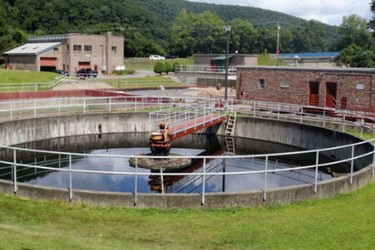How Data And Nature Can Combine To Help Small Wastewater Treatment Plants Address Huge Hauling Costs
By Dr. Malcolm Fabiyi, COO, Drylet

It is no secret that the number of landfills has been steadily decreasing across the United States. As more and more cities adopt ‘zero waste to landfill’ sustainability goals, the number of landfills has shrunk from 6,326 in 1990 to 1,738 in 2015. Decreasing landfills has meant increased waste hauling costs for wastewater treatment plants (WWTPs) as sludge travels farther distances to reach landfills. WWTPs serving smaller communities tend to feel these costs even harder due to smaller ratepayer bases, amongst other factors.
The town of South Deerfield, MA, with its population of 1,880, is one example of many. The city’s WWTP had seen its waste hauling costs triple in recent years and expected them to continue to increase. In 2017, the WWTP hauled out an average 64,500 gallons of sludge over seven trips monthly, coming to a total of $5,762 in hauling fees every month. To find a solution to these high additional costs, South Deerfield WWTP’s Chief Operator Keith Milne needed a solution that would help reduce biosolids volumes at his plant without risking compliance or adding to budget concerns. Milne came across a nature-derived solution that relies on data analysis to optimize plant operations. Drylet’s Aqua Assist, a technology formulated with engineered inorganic and porous particles seeded with mixed microbial cultures, can boost the processing power of wastewater treatment plants by accelerating the natural breakdown of biosolids into water and CO2. Data modeling further boosts the power of these microbes by determining the optimal schedule, dosages, and locations for product application using historical operational and process data as inputs.
The Data Distinction
Across sectors, data is the new gold, and wastewater treatment is no exception. Data modeling can be an essential tool for providing reassurance that new techniques will perform as expected and keep WWTPs in regulatory compliance. Sludge reduction cannot work under a one-size-fits-all model. Every plant operates differently, and complex factors such as influents, weather conditions, population size, plant size, and structure influence sludge production and, in turn, sludge reduction strategies. Using data modeling helped optimize the product’s application specifically for the South Deerfield plant and its operating conditions.
The South Deerfield WWTP’s structure consists of a small, extended aeration facility with no headworks, one mechanical, floating, surface aerator, and only one small circular final clarifier. The plant’s process involves turning off the return activated sludge pumps to allow the solids to build up in the clarifier for several hours. It then wastes to a sludge holding tank, introducing a coagulant along the way. A typical wasting batch of sludge at South Deerfield averages 20,000 gallons.
Drylet used data modeling that take these factors and more into account to develop an optimal sludge reduction strategy by creating a digital replica of the plant. For example, the South Deerfield WWTP began a three-month trial with Aqua Assist starting in November 2017. Using the predictive capabilities of the plant’s digital twin, operators could launch the product during winter, when lower temperatures and higher salt levels create challenging conditions for biological activity that might otherwise complicate a microbial solution.
Small Operational Changes Drive Success
Sometimes optimization may involve changing traditional operating conditions as well. Prior to using the product, the plant ran a mixed liquor suspended solid level (MLSS) level of 2,800 to 3,400 mg/L during the warm season and 3,400 mg/L to 4,000 mg/L in winter. The data model suggested the plant let its MLSS climb to 4,000 and eventually 5,000 mg/L because that facultative environment helped with biochemical oxygen demand (BOD) removal and gave the microbes more time to reduce the inventory of biosolids. While this meant changing operations and stepping out of their comfort zone, operators at the South Deerfield plant were willing to see what effects the trial would produce thanks in part to confidence in the predictive model.
After four months, the plant saw a 43 percent reduction in biosolids compared to the monthly average from the previous year. South Deerfield extended its trial with Drylet for a full year and continues to see increasing success. By the summer, the WWTP reduced its sludge hauling by 70 percent in July and saved 68 percent on its sludge hauling and disposal costs in August compared to the same months in 2017. Data modeling was key in providing assurance to the South Deerfield team that changing their operating methods would result in beneficial changes. “This whole experience has been pretty remarkable,” said Chief Operator Keith Milne. “It has taught me — and allowed me the latitude — to operate differently and in a way that reduces our overall operational cost significantly.”
There are approximately 15,617 WWTPs in the U.S., and 72 percent of those serve communities of 10,000 people or less. Small WWTPs face many financial challenges. Alongside increasing hauling costs, they also may lack the capital to invest in sludge reduction infrastructure. Low capex solutions are important for small plants like South Deerfield, providing a faster and larger return on investment than more costly solutions such as plant infrastructure upgrades. The power of data and the power of nature combined can help the nation’s many small WWTPs optimize their operations at a lower cost.
